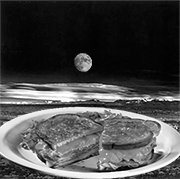|
Hi all, hope this is kosher. I'm an engineer who's also a relatively recent and keen film photographer (as some of you probably know from various threads). After doing a fair amount of home film processing, chatting to local film labs and feeling out the market a bit I've decided to attempt to develop a new fully automatic photographic film processing machine targeted at the hobby/light commercial market. I've set up a super quick website with a blog where I intend to post frequent updates as I go through the process and I'm really hoping to get people engaged and giving feedback as I go. The address is: http://midtonemachines.com First post is mostly just a bit of an introduction, next post will be getting more into the details of the project. I'll also be posting updates into this thread as I go for people who don't want to go to my garbage website. Feel free to call me an idiot or w/e, all feedback is good feedback!
|
|
|
|

|
| # ? May 3, 2024 12:43 |
|
This seems interesting. Have you seen some of the more-or-less automatic options that other people have already invented such as the Filmomat or the Kanton DX3?
|
|
|
|
Helen Highwater posted:This seems interesting. Have you seen some of the more-or-less automatic options that other people have already invented such as the Filmomat or the Kanton DX3? Yep I've had a fair look around the old and existing options, as well as surveyed ~20 small film lab owners who use older semi and fully automatic machines, usually for a secondary film type (e.g. they use a roller transport machine for C-41 which is the bulk of their business but use an old JOBO or Phototherm for C-41 or E-6). The Kanton looks very slick but it still semi-auto and only designed for a single process with three chemicals, which is probably enough for the home market but nowhere near enough for light commercial. The Filmomat strikes me as being very expensive for what it is and is clearly built very 'small batch' without taking advantage of any kind of volume production techniques. It also has similar issues to the above (limited number of chemicals, limited chemical volume, large volume of chemicals per reel due to vertical tank, water bath takes a long time to heat up/change temperature). I'll cover all of this in a more detailed future post but I've gone through a few attempts at the design already and what I ended up with as being a best fit for the type of user I'm aiming at is something similar to the Phototherm Supersidekick except (hopefully) significantly cheaper, much easier to use, more robust, smaller etc. Assuming you're starting from a cylindrical tank based design and not roller transport or dip and dunk (much too expensive for the home/small commercial market as a secondary machine) you have the option of a vertical (Filmomat) or horizontal (Phototherm, JOBO etc.) developing tank. I really wanted to go vertical because in some ways it's easier but I eventually had to go horizontal primarily because you need significantly less chemical volume per roll of film. This makes a number of big differences, smaller volumes are quicker to heat up, quicker to pump, take up less internal volume and result in less waste when doing one-shot processing. After you decide on horizontal you either rotate the entire drum (JOBO) or just the film inside (Phototherm). The issue with rotating the entire drum is that you can only get chemical in and out through the central axis, which means you need to tip the entire container up to drain. This is more complicated, fragile and makes the developing tank harder to heat during processing unless you use a water bath. Chemical heating is another consideration, water baths are easy and very stable due to the high thermal mass but take a long time to heat up and cool down, so you couldn't for example run one batch of B&W and then immediately do a batch of C-41 or E-6. Heating the chemical itself prior to pumping into the tank is a bit more complicated but significantly more flexible and IMO worth it.
|
|
|
|
Next installment of the blog, everything you never wanted to know about automatic film developing machines: http://midtonemachines.com/news/on-the-shoulders-of-giants/ Some of what I already covered, some new, trying not to kill people's attention span with huge walls of text and probably failing.
|
|
|
|
This is incredibly interesting. Likely far outside my use case of only a few rolls a month but I'm still interested in seeing your progress. Is inline heating of the chemistry feasible or accurate enough instead heating the entire bath? Passing it through a heating coil on its way to the bath. We have those in my apartment instead of a single large hot water tank and its able to deliver consistent temperature to my tap almost instantly.
|
|
|
|
Sauer posted:This is incredibly interesting. Likely far outside my use case of only a few rolls a month but I'm still interested in seeing your progress. Is inline heating of the chemistry feasible or accurate enough instead heating the entire bath? Passing it through a heating coil on its way to the bath. We have those in my apartment instead of a single large hot water tank and its able to deliver consistent temperature to my tap almost instantly. The now discontinued phototherm did it this way, except the chemicals are pumped into a holding tank where they are heated as opposed to being constantly heated while pumping. There also needs to be some temperature control of the developing tank during the process or the chemicals will just cool down. The phototherm used a literal hairdryer strapped into the machine to blow hot air on the tank however I think a large silicone heating pad that the tank sits on will be better. EDIT: Oh hey I also now have Facebook and Twitter pages for people to follow if they'd like: https://twitter.com/MidtoneM https://www.facebook.com/midtonemachines/ Blackhawk fucked around with this message at 09:22 on Jul 15, 2019 |
|
|
|
My first thought is that it seems like having it be fully automatic, including filling/draining chemicals, adds a lot of constraints on your design. Any particular reason you want to avoid having users do that part? I have a Jobo CPP2 with a lift and my personal opinion is that something like that, or even like a CPE2 with the magnet style attachment, but $400 instead of $1000+, would be incredibly appealing.
|
|
|
|
MrBlandAverage posted:My first thought is that it seems like having it be fully automatic, including filling/draining chemicals, adds a lot of constraints on your design. Any particular reason you want to avoid having users do that part? Primarily I'm targeting a market that is willing to pay for a high-throughput machine that doesn't require constant attention. There are already a number of new-built semi-auto machines currently available (at least 4 that I know of) and I don't think there's any real point of difference to be had in that area right now. The pump and valves aren't really that expensive compared to all of the other aspects of the machine. You have to remember that this is a small market so you really don't get the volume price reductions you can get in other industries, tooling ends up to be the largest cost per machine (more than materials and assembly). Electrical safety certification will also add a significant price per machine, so prices are never going to be as low as other much higher volume consumer electronic devices.
|
|
|
|
Blackhawk posted:Primarily I'm targeting a market that is willing to pay for a high-throughput machine that doesn't require constant attention. what separates your perceived market for this vs. the market that uses labs already
|
|
|
|
ansel autisms posted:what separates your perceived market for this vs. the market that uses labs already I'm targeting the lab itself basically. I've been working with the local lab owner and have done a small survey of other labs around the world. The small labs tend to use a roller transport machine to do their primary film type (typically C-41) but use any of the older semi or full auto spiral tank machines (Phototherm, JOBO CPP/Autolab etc.) for other developing they offer like B&W or E-6. It's a smaller market for sure but as I mention in the recent blog it's very hard to make something at a price low enough that your average home photographer could justify, to do that you need a lot of money up-front for tooling and you have to amortize that over a large number of machines. I imagine this machine would be worth owning for somebody who's shooting a lot of film or for a small lab. Maybe if this one goes well enough and I get enough profit I can re-invest into tooling up for a 'mini' version, but for the time being I'm taking the safe route.
|
|
|
|
pretty much every lab just sends all of their b&w or e6 to another lab that does a lot of it. in fact, they might even specialize in film processing. I'm not seeing a market for this. If you're a hobbyist, then you're not going to buy one since you're going to home dev, or send out. If you're a professional, you're not going to buy one because time is money and you're going to send out your film. If you're a lab, you're not going to buy one since it's still such a niche product and process, plus every minute it sits around it's not making you money, and even when you're running it you're not producing enough to make it worth producing. plus, there's always the option of just sending to another lab that does this specifically.
|
|
|
|
Wild EEPROM posted:pretty much every lab just sends all of their b&w or e6 to another lab that does a lot of it. in fact, they might even specialize in film processing. Yes sending it to another lab is definitely A Thing, the local lab sends out their E-6 for example, I'd assume because it's not as much volume as B&W and they only have one phototherm to go along with their larger C-41 machine. They DO however have a phototherm for B&W which they use for paid work (hundreds of rolls per week, for a relatively tiny lab). In the 22 responses I got to a survey of similar lab owners/hardcore hobbyists 14 of them already own a small automatic film processor (6 phototherm, 7 JOBO one person has two of them, 2 noritsu) and 19 of the 22 would consider buying a newly available machine of a similar type. Obviously this isn't an iron-clad guarantee of a market and I agree that it's probably not going to be huge (I somewhat doubt it would be enough that I could do it as a full time job TBH) but I'm being pretty conservative in my approach and aim to at least break even all up with quantities as low as 10 units.
|
|
|
|
New blog post up, going into detail about the survey results I've mentioned recently: http://midtonemachines.com/news/a-slice-of-pie-charts/ I've also put a link to the survey at the end of the post so everyone can participate (I understand the desire but I'd appreciate it if people could hold back from shitposting the survey!)
|
|
|
|
New blog post is up, hopefully a little more interesting than last time: http://midtonemachines.com/news/meat-and-potatoes-fluid-diagram/ This time I've shared the fluidic system diagram and gone into some detail about how the chemicals move around the machine. I've been getting lots of prototype parts in over the last few weeks and I'm close to 3D printing the development tank components so I can do fit and functional checks before committing to vacuum resin casting a batch of 10.
|
|
|
|
A few teaser pics of the CAD for the developing tank part of the machine and some sample bits I've ordered in for prototyping, new blog post with more info here: http://midtonemachines.com/news/the-develop-tank/  
|
|
|
|
I've been avoiding spamming this thread so much but now I have some actual hardware under test: http://midtonemachines.com/news/sheet-metal-and-valves-oh-my/    
|
|
|
|
This is a really cool project, I hope you post the first trials here!
|
|
|
|

|
| # ? May 3, 2024 12:43 |
|
pointsofdata posted:This is a really cool project, I hope you post the first trials here! Cheers, not sure if you've seen it but there's been a lot happening (I just haven't been posting it here because I didn't want to spam the place). I got 10 machines worth of plastic parts vacuum cast in polyurethane:  Mostly built up the first prototype, wired it up and programmed it:  Designed up some custom PCB's to clean up the wiring (they actually arrived yesterday but I probably won't populate them until next year now):  All in all still looking good, it's a fairly big project but it's important that I design it not only to work but also to be affordable and easy to produce in moderate quantities if it comes to that.
|
|
|














